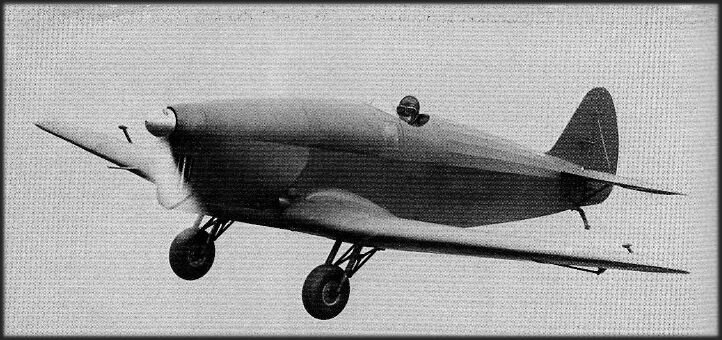The Streak
Comper Streak Data
Dimensions
Wing Span 23ft 6in
Length 18ft 0in
Height 5ft 9in
Aspect Ratio 5:8
Wing Area 80 sq ft
Weights
Tare weight 880lb
Gross weight 1,429lb
Wing loading 18.75/sq ft
Fuel Consumption 11.5 gal/hr at 2,400 r.p.m.
The single seat sports monoplane was originally designed to compete in the ill-fated International Air Races. Comper decided to enter the Streak for the 1934 Coupe Deutsch and work on the plane began in earnest in late 1933. The Comper Aircraft Company realised that the Swift was reaching the end of its life and needed a replacement.
When the Streak emerged from the Heston workshops it looked for all the world like a low-winged Swift with a retractable undercarriage. Comper installed a high compression 146 hp Gipsy Major engine of only 6.1 litre capacity and unsupercharged. Its maiden flight was on 12th April 1934. The trial was marred by major structural problems with the ailerons. They stayed intact but on landing it was possible to see that for every aileron a hinge eye-bolt had sawn a vertical slot in the rear spar web. Disaster was narrowly averted.
The Streak received its air worthiness certificate on 18th May 1934 and as planned was entered at Etampes. But in the second round of the competition its undercarraige failed to retract and it was retired after six laps. It appeared again in the King's Cup of that year at Hatfield. Comper was forced to retire the plane after the first round after it had failed to reach its handicap speed of 180 mph.
By now the Comper Aircraft Company's financial troubles had come to a head. The new company that replaced it, Heston Aircraft Company (in which Comper was not a part) struggled on. In 1935 the plane made its last public appearance at the King's Cup air race. After that it faded into obscurity and was finally scrapped in 1937.





